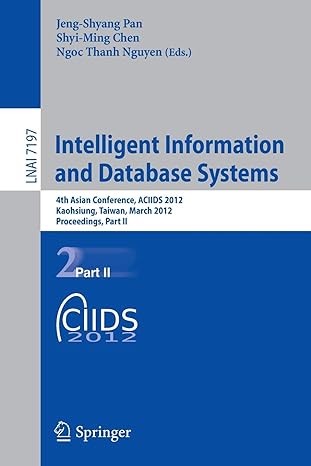Question
Reverse Polish Notation, or Postfix Notation, is a different way of writing mathematical expressions from the Infix Notation you are used to. It is called
Reverse Polish Notation, or Postfix Notation, is a different way of writing mathematical expressions from the Infix Notation you are used to. It is called Polish because of a Polish mathematician named Jan ukasiewicz, but where he put mathematical operators before their operands (Prefix Notation), Reverse Polish puts them after.
How Reverse Polish Works
You are used to placing operators between their operands, as in 4 + 2, which of course evaluates to 6. In Reverse Polish, however, the same expression would be written as 4 2 +. This looks strange at first, but youll soon get used to it.
If you want a longer expression, such as 3 + 4 + 2, you write it 3 4 + 2 +, and solve as follows:
3 4 + 2 +
7 2 +
9
Interestingly enough, the same expression can be written as 3 4 2 + +. To solve, you find the leftmost operator, apply it to the previous two operands, and repeat. This is, of course, due to the associative property
of addition.
3 4 2 + +
3 6 +
9
Though it may not be obvious to you, this completely removes the need for parentheses and order of operations. The expression (3 + 2) x (7 - 5), which evaluates to 10 with parentheses but 12 without, is written as 3 2 + 7 5 - x in RPN.
3 2 + 7 5 - x
5 7 5 - x
5 2 x
10
A Little Context
Starting in 1968 until 1977, Hewlett-Packards calculators were entirely based on Reverse Polish Notation, in a time when calculators were expensive and important pieces of equipment. To this day, they still make RPN calculators, though they are perhaps not as popular as they once were. Interestingly, RPN calculators require no = button, as the calculator computes an answer as soon as it sees any mathematical operator.
But Why?
Why would HP choose to make RPN calculators? Because they are so easy to implement using a stack. Consider the following algorithm, written in pseudocode, taken from Wikipedia.
for each token in the postfix expression:
if token is an operator:
operand_2 pop from the stack
operand_1 pop from the stack
result evaluate token with operand_1 and operand_2
push result back onto the stack
else if token is an operand:
push token onto the stack
result pop from the stack
Now, traditionally this was done with an array-style stack, of fixed height, because it was so simple, but we can use a linked-stack with no worries.
The Actual Project
You will implement an RPN calculator, using a stack, which takes its input either from the command line or a user inputted string, with each token (operators and operands) separated by spaces. It will print the results to the console, and must work with +, -, x and /. You choose the programming language.
Step by Step Solution
There are 3 Steps involved in it
Step: 1

Get Instant Access to Expert-Tailored Solutions
See step-by-step solutions with expert insights and AI powered tools for academic success
Step: 2

Step: 3

Ace Your Homework with AI
Get the answers you need in no time with our AI-driven, step-by-step assistance
Get Started


